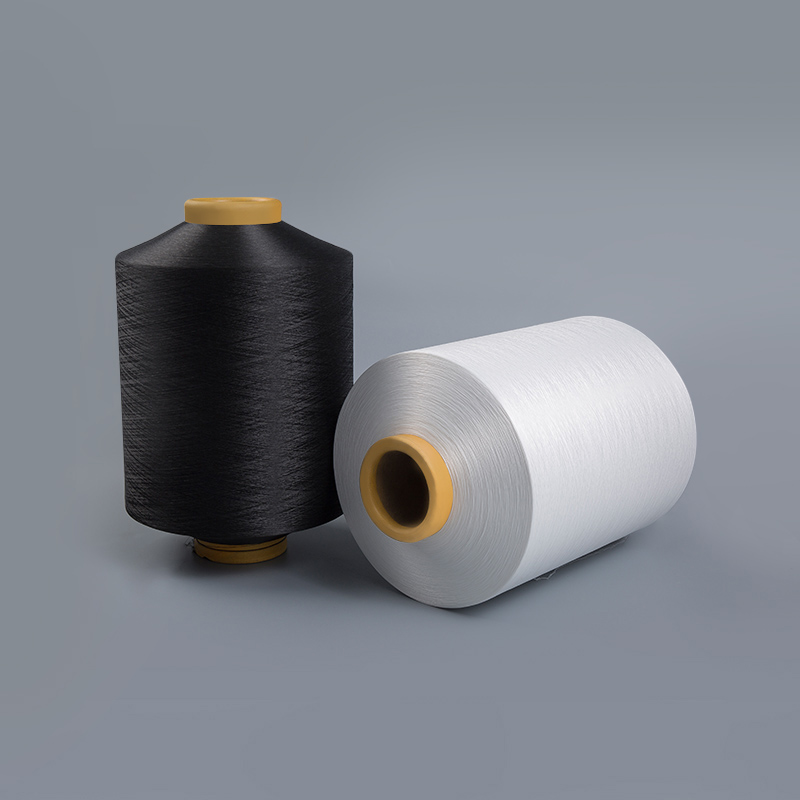Email us now!
Pilling occurs when fibers in a fabric surface break loose due to friction, typically resulting in small, unsightly balls of tangled fiber. Polyester mechanical covered yarn, due to its unique structure, exhibits exceptional resistance to pilling. The mechanical covering process involves wrapping the core fiber—often a more elastic material like spandex or nylon—with an outer layer of polyester fibers. This outer covering enhances the smoothness and abrasion resistance of the yarn, reducing the likelihood of fibers breaking loose under stress. Additionally, polyester is naturally a smooth and strong fiber, which helps minimize friction between yarns and fibers within the fabric, further mitigating pilling. As a result, fabrics made from polyester mechanical covered yarn maintain a cleaner, more uniform surface for longer periods, even in high-wear environments. This makes it ideal for high-traffic textiles, such as upholstery and clothing that undergoes frequent washing and wearing.
Snagging is a common issue in fabrics subjected to rough contact, where a loop of fiber is caught on a rough surface or sharp object. Polyester mechanical covered yarn is inherently resistant to snagging because the mechanical covering process not only strengthens the yarn but also makes its surface smoother and more uniform. The polyester wrap effectively holds the core fiber in place, preventing it from being pulled out easily, which can reduce the chances of loops catching on external objects. This is particularly beneficial for garments and fabrics used in environments with high potential for abrasion or rough contact, such as outerwear, activewear, and industrial textiles. Furthermore, the outer polyester layer provides additional reinforcement to the yarn, making it more robust against mechanical damage during regular handling or in areas exposed to frequent friction, such as cuffs, seams, or edges.
Fraying happens when individual fibers begin to unravel from the edges or seams of a fabric, usually caused by repeated stress or cutting. Polyester mechanical covered yarn is designed to resist fraying due to its tightly woven structure, which binds the fibers together and ensures greater stability. The mechanical covering technique ensures that the core yarn is securely wrapped in a smooth polyester coating, effectively preventing the fibers from loosening or coming undone. As polyester is known for its high tensile strength and durability, fabrics made with this type of yarn retain their shape and structural integrity, even in high-stress applications. The strong outer layer of polyester also enhances the yarn's resistance to environmental factors that could otherwise cause fiber degradation, such as moisture, heat, or abrasion. In applications like garment hems, seams, or outdoor gear where fabrics are often cut or subjected to heavy movement, polyester mechanical covered yarn helps prevent the unraveling or fraying of the material, ensuring that the garment or textile maintains its functionality and aesthetic over time.
In addition to its resistance to pilling, snagging, and fraying, polyester mechanical covered yarn offers several other notable advantages. Its high resistance to environmental stressors such as UV light, moisture, and temperature fluctuations makes it an excellent choice for both indoor and outdoor applications. Polyester fibers themselves are highly resistant to fading, ensuring that products made from polyester mechanical covered yarn retain their color and appearance even after prolonged exposure to sunlight and washing. The mechanical covering process adds a layer of flexibility and stretchability to the yarn, particularly when elastic core fibers like spandex are used. This flexibility ensures that fabrics made from polyester mechanical covered yarn can stretch without losing their structural integrity, making it an excellent choice for garments and textiles that require both durability and comfort, such as activewear, sportswear, and stretchable upholstery fabrics.













